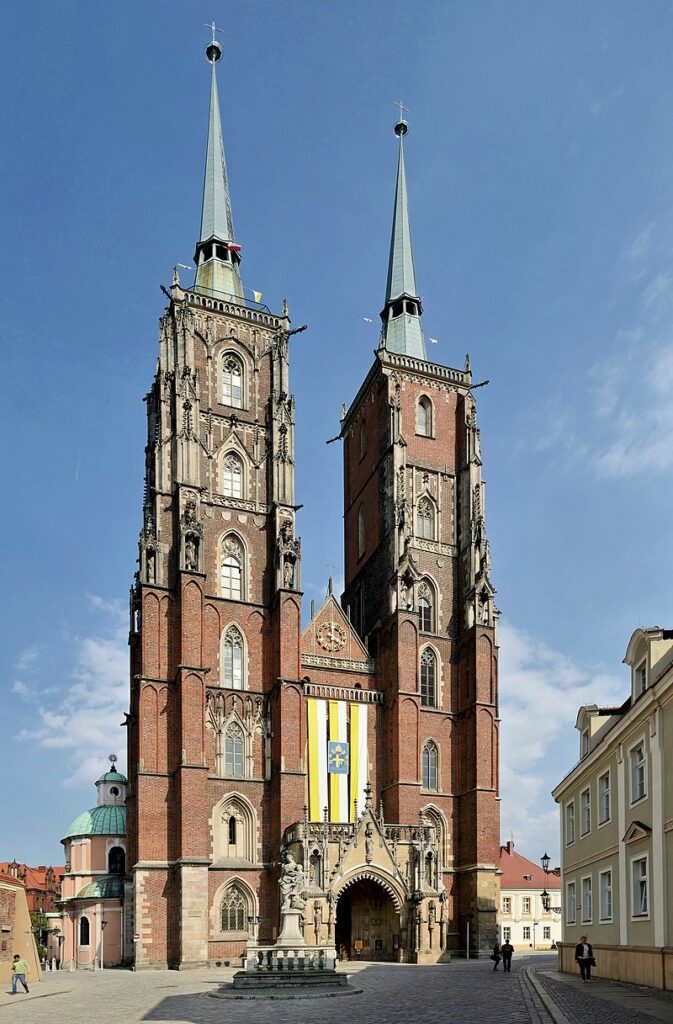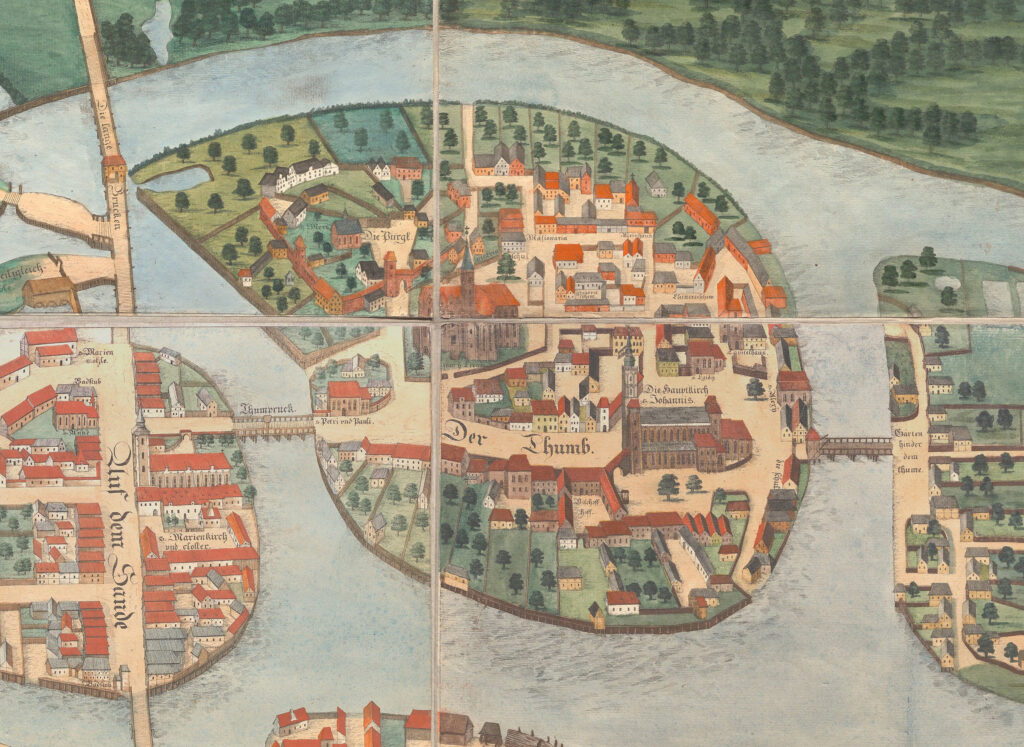Ostrów Tumski is the oldest part of Wrocław, often regarded as the cradle of the city. Situated on an island surrounded by the arms of the Oder River, it has been an important centre of both secular and religious power for centuries. Its history dates back to early medieval times when the first settlement was established here, eventually evolving into a dynamic political and spiritual hub.
The Beginnings of Ostrów Tumski
The earliest traces of settlement on Ostrów Tumski date back to the 10th century, a period when the lands of Lower Silesia were incorporated into the state of the Polans. At that time, the area was most likely home to a fortified stronghold of the Ślężan tribe, protected by natural water barriers and wooden-earthen fortifications. In around 985, Mieszko I, the ruler of Poland, incorporated this territory into his domain and built a fortified settlement, which played a strategic role in securing Polish rule over Silesia.
In the year 1000, following the Congress of Gniezno, the Wrocław bishopric was established, with Ostrów Tumski becoming its seat. This led to the construction of the first cathedral, a monumental investment that underscored the importance of the site within the structure of the Piast state and marked the beginning of its transformation into a key religious centre.


Ostrów Tumski in the Middle Ages
Throughout the 11th and 12th centuries, Ostrów Tumski remained not only the religious but also the political heart of Wrocław. It served as the residence of Silesian dukes, who built their palaces here. The area saw the construction of numerous sacred buildings, and its fortifications were expanded to protect it from invasions. Despite these defences, the Mongol invasion of 1241 resulted in significant destruction of Ostrów Tumski and the surrounding settlement.
Following its reconstruction in the late 13th century, Duke Henry IV Probus decided to move the capital of his duchy to the newly established city of Wrocław, located on the left bank of the Oder. As a result, Ostrów Tumski began to lose its political significance, though its spiritual and cultural role continued to grow. In 1315, the Silesian dukes transferred control of the area to the bishops of Wrocław, a decision that had far-reaching consequences—turning it into a district administered by the Church.
The Development of Sacred Architecture
From the 14th century onwards, Ostrów Tumski became a true ecclesiastical enclave. Churches, monasteries, and buildings associated with clerical life were erected here. The dominant structure was, of course, the Cathedral of St John the Baptist, whose present Gothic form dates back to the 13th and 14th centuries. It was the first fully Gothic cathedral in Poland and remains one of the country’s most significant religious monuments.
Beyond the cathedral, many other important buildings were constructed on Ostrów Tumski. One of the most notable is the Church of the Holy Cross and St Bartholomew—a unique two-level church built on the initiative of Henry IV Probus. Another significant structure is the Church of St Giles, the oldest surviving building in Wrocław, dating back to the 13th century.
Over the centuries, the district continued to be enriched with new architectural elements, including bishops’ palaces and canons’ houses. In the 18th century, during the Baroque period, numerous new structures were built, and existing ones underwent modernisation.
Ostrów Tumski in the 19th and 20th Centuries
The 19th century brought rapid urban development to Wrocław due to industrialisation, and this transformation affected Ostrów Tumski as well. In 1807, under Napoleon’s orders, the medieval fortifications of Wrocław were dismantled, allowing for the city’s expansion. However, Ostrów Tumski retained its historical character as an ecclesiastical enclave.
During World War II, Ostrów Tumski suffered significant damage due to bombing raids. The cathedral and many other historic buildings were heavily damaged. After the war, extensive reconstruction efforts were undertaken, beginning in the 1950s, to restore the district’s original appearance. Many structures were meticulously rebuilt, and the area gradually regained its former splendour.
Ostrów Tumski Today
Today, Ostrów Tumski is one of the most visited places in Wrocław. Its picturesque cobbled streets, Gothic churches, and peaceful atmosphere attract both tourists and locals alike. A particularly charming feature is the traditional lamplighter, who, each evening, manually lights the district’s gas lanterns, adding to its unique ambiance.
Ostrów Tumski remains a significant religious centre, with the Cathedral of St John the Baptist serving as the main church of the Wrocław Archdiocese. Many of the district’s buildings continue to belong to the Catholic Church, preserving its historical and spiritual legacy.
Historical and Cultural Significance
Ostrów Tumski stands as a testament to Wrocław’s centuries-old history and remains one of the most important sites of Polish cultural heritage. Its role as a religious centre, along with its contribution to the development of architecture and art, makes it a key landmark on Poland’s historical map. Today, it is not only a place of exceptional historical value but also a space where history and modernity meet, creating the unique atmosphere that defines Wrocław.
